…And that’s the University City, with almost 50,000 students not only from Novi Sad and Vojvodina, but also from entire Serbia and the region, and even European and world countries. We bring you the story of the University of Novi Sad and the student campus.
Novi Sad has always been a bastion of education, science, culture and an overall intellectual incubator. The city has kept this title to this day and added some new ones, such as the European Capital of Culture. Numerous educational and cultural institutions were created and developed in such an environment. Recognizing the importance of educating young generations, even Serbian Patriarch Josif Rajačić tried to open a university in Sremski Karlovci or Novi Sad in 1854, but Viennese circles were not interested in supporting this initiative.
The foundations of higher education in this milieu were laid long ago in 1740, with the founding of the Visarion’s Collegium (Collegium Vissariono-Pawlovicsianum Petrovaradinense) in Novi Sad, the founding of the Norma – School for the Education of Serbian Teachers in 1788 in Sombor, Preparandija in 1812 in Santandreja, and other institutions that contributed to the development of scientific thought.
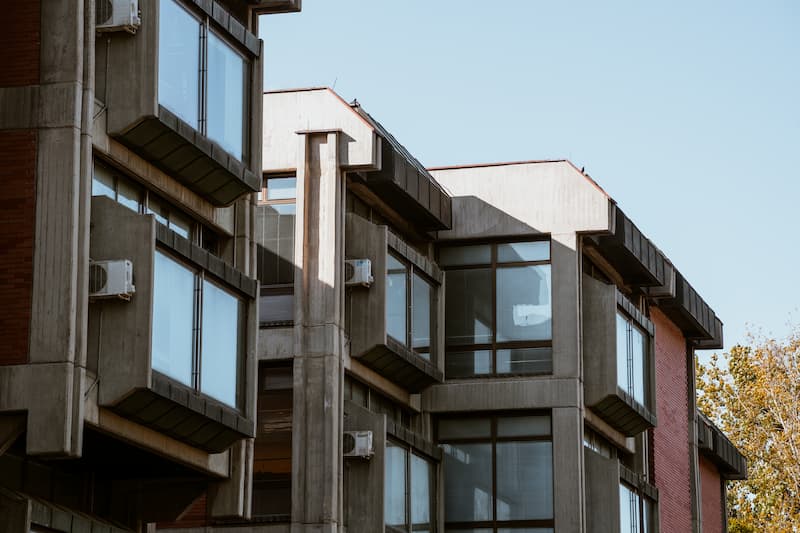
How the University of Novi Sad came into being
The Faculty of Philosophy and the Faculty of Agriculture were founded in Novi Sad in 1954, and together they formed the core from which the University of Novi Sad will develop six years later. At the time of their founding, they were part of the University of Belgrade, which provided complete logistical assistance. The University of Novi Sad was officially founded on June 28, 1960, by a decree promulgating a law passed by the National Assembly of the Republic of Serbia.
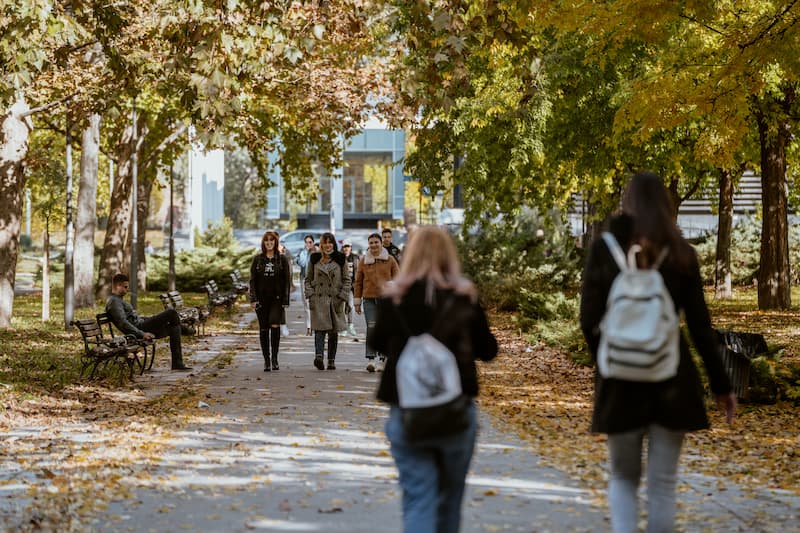
The Faculty of Philosophy and the Faculty of Agriculture were founded in Novi Sad in 1954, and together they formed the core from which the University of Novi Sad will develop six years later. At the time of their founding, they were part of the University of Belgrade, which provided complete logistical assistance. The University of Novi Sad was officially founded on June 28, 1960, by a decree promulgating a law passed by the National Assembly of the Republic of Serbia.
Today, the University of Novi Sad is the highest educational, scientific and artistic institution in Vojvodina and the second largest in Serbia, where over 50,000 students receive higher education. The University of Novi Sad includes a total of 14 faculties, within which about 360 accredited study programmes are implemented, at the level of basic, master’s, specialist and doctoral studies. The headquarters in Novi Sad has nine faculties, seven of which are located on the university campus – Philosophy, Law, Agriculture, Technology, Faculty of Technical Sciences, Natural Sciences and Mathematics, and the Faculty of Sports and Physical Education. The Faculty of Medicine is located within the Clinical Centre and the Academy of Arts at the Petrovaradin Fortress.
Five faculties belonging to the University of Novi Sad have headquarters in other cities in Vojvodina. The Faculty of Economics, the Faculty of Civil Engineering, and the Faculty of Teacher Education in the Hungarian language are based in Subotica, the Technical Faculty ‘Mihajlo Pupin’ is based in Zrenjanin, and the Faculty of Pedagogy is in Sombor. The University of Novi Sad also includes three institutes – the Institute of Lowland Forestry and Environment, the Scientific Institute of Food Technology and the BioSense Institute for Information Technology in Biosystems. Students, professors and researchers have access to the central library, libraries of faculties and institutes, as well as the Matica Srpska Library, which boasts more than 3,000,000 publications. The University has so far participated in over 300 partner and coordinating international projects, including Horizon 2000, Erasmus, and Tempus.
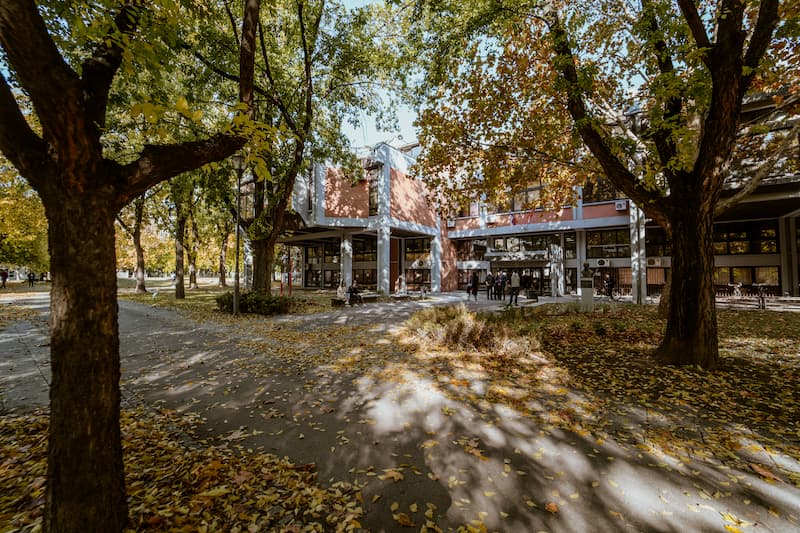
Campus: The City of Students
The University of Novi Sad has a university campus, with an area of 259,807 m2. It is located on the left bank of the Danube, in the part of the city called Liman 1. Here are most of the faculties, the administrative building of the University, two dormitories (Slobodan Bajić and Veljko Vlahović), a student restaurant (large canteen), a hotel with apartments for temporary accommodation of young teachers and associates, the Institute for Student Health Protection, the Student Centre, many scientific, sports, cultural, informational, professional student organizations, as well as a beautifully decorated student square.
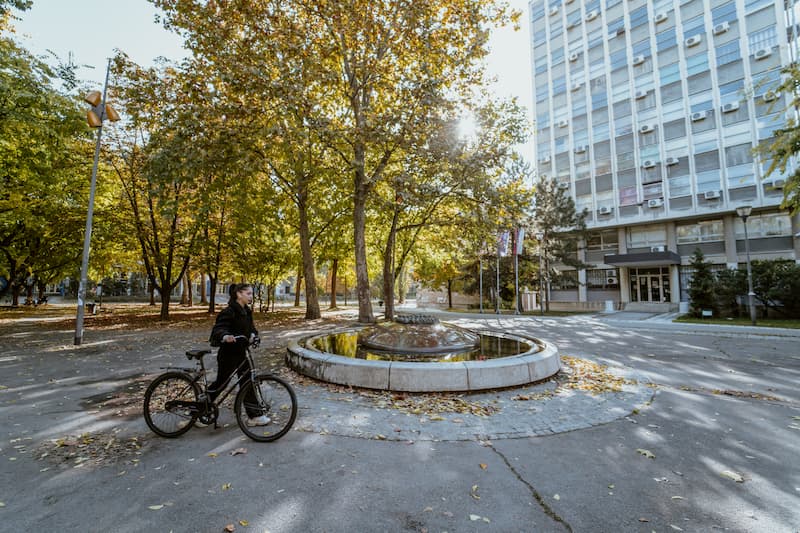
The youth of Novi Sad who study in their city are very numerous, and many students come from all over Serbia, as well as from abroad. But studying is not only about learning, but also about socializing. Novi Sad is a city where different cultures, nations, and languages have intertwined for centuries… It is a city that has managed to preserve its relaxed spirit, lowland peace, and kindness. A city where people call each other ‘gari’, where the Danube is the sea, and where the most famous sandwich is called the ‘Index Sandwich’. And you can’t really say you studied in Novi Sad if you never tried it. The city hosts numerous festivals and events – Exit, Street Musicians Festival, Sterijino Pozorje, Kaleidoscope of Culture, Jazz Festival… and all this is an ideal opportunity for a good time for students.
The Student Cultural Centre is an institution of great importance for the cultural life of students and young people in Novi Sad. The most important events in the production of SKC NS are: Rhythm of Europe, To Be Punk.Festival., Novi Sad Comic Weekend, Tanz Platz Festival of Contemporary Dance, and Upad Theatre Festival.
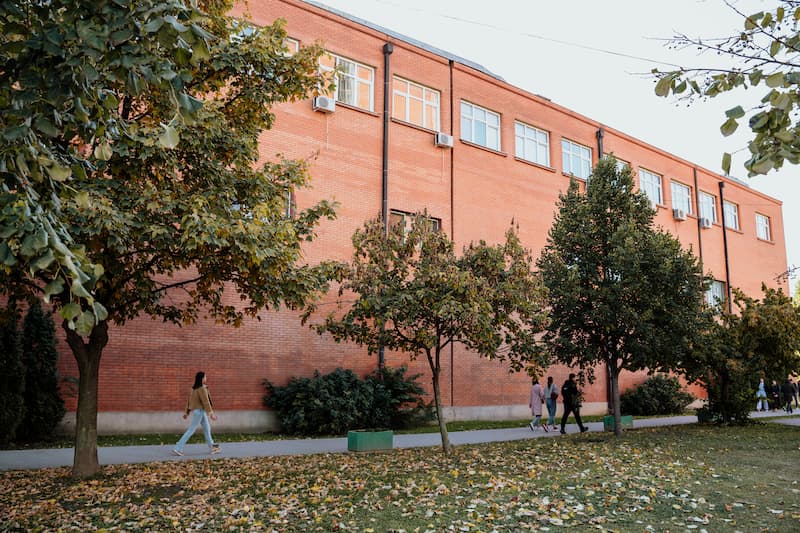
November 17 is proclaimed to be International Student Day, in memory of the day when in 1939 the Nazis killed several Czech students and sent more than 1,200 others to concentration camps because protested the German occupation. The day of the University of Belgrade students is April 4, the day when in 1936 Žarko Marinović, a law student and a member of the CPY, was killed during the student strike. This only confirms that throughout history, students have always been a corrective factor for all the anomalies of society, those who were among the first to raise their voices against injustice. The students represented the avant-garde of young people, which promotes new trends in all fields of society. Such an avant-garde is very numerous in Novi Sad today.
Author: MSc Ljiljana Dragosavljević Savin, historian
Photo: Jelena Ivanović







